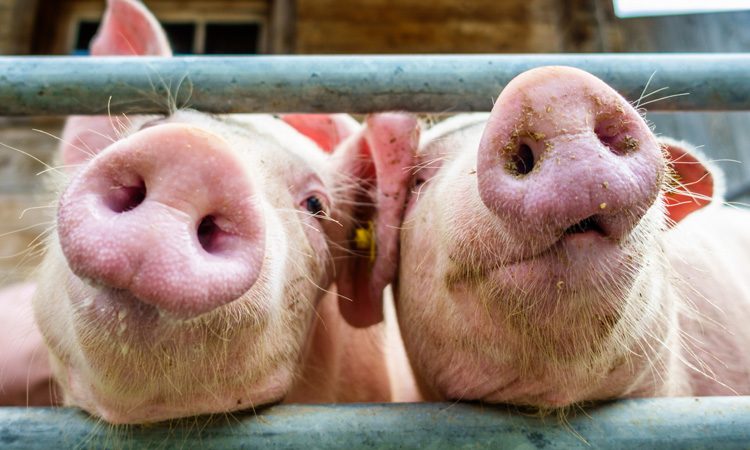Bacterial virus helped new strain of Salmonella become widespread in pigs
- Like
- Digg
- Del
- Tumblr
- VKontakte
- Buffer
- Love This
- Odnoklassniki
- Meneame
- Blogger
- Amazon
- Yahoo Mail
- Gmail
- AOL
- Newsvine
- HackerNews
- Evernote
- MySpace
- Mail.ru
- Viadeo
- Line
- Comments
- Yummly
- SMS
- Viber
- Telegram
- Subscribe
- Skype
- Facebook Messenger
- Kakao
- LiveJournal
- Yammer
- Edgar
- Fintel
- Mix
- Instapaper
- Copy Link
Posted: 29 October 2020 | Bethan Grylls (New Food) | No comments yet
The dominant strain of Salmonella Typhimurium in pigs may owe its success to acquiring a toxin gene from a virus that invades the bacteria themselves.


Cases of African Swine Fever have been reported in western Germany
Researchers have discovered a bacterial virus which has helped spread a new strain of Salmonella in pigs.
Salmonella is associated with a large number of cases of foodborne infection, with half of all cases in the European Union linked to pigs. This new strain, known as ST34, is dominant in these animals and has spread on a global scale, the researchers at the Quadram Institute said.
New strains have emerged repeatedly since surveillance records began over 60 years ago. The ST34 strain is a type of Salmonella called Typhimurium, which accounts for a quarter of all Salmonella infections.
In the UK, over half of all Typhimurium infections are now caused by the ST34 strain. Typhimurium has been increasing as a proportion of all Salmonella infection for more than a decade, mainly because of the emergence of this new strain.
Unlike a related Salmonella called Enteritidis that has been largely controlled in layer hen flocks in the UK, there has been little success in managing Salmonella Typhimurium. The occasional replacement of the dominant epidemic strain of Typhimurium causing disease may make this a moving target.
Understanding why new strains emerge and what makes them distinct from previous strains is therefore an important step towards determining ways in which we can tackle this pathogen.
Viruses are best known for causing some of the worst infections in people throughout history, and the current pandemic SARS-CoV-2 is no exception. They are very small packages of genetic material that require cells to replicate their genetic material, and in doing so, cause disease.
There are also viruses, called bacteriophages, that use bacteria to replicate and as such, destroy the bacterium. However, some are also able to hide inside the bacterial cell by merging with the bacteria’s genetic material.
The researchers believe that this is what happened – perhaps hundreds of times – during the emergence of the ST34 pandemic strain and consider this to be a contributing factor to its global spread.
The team found that the common ancestor of the epidemic in UK pigs existed around 30 years ago but went unnoticed until 2005, when surveillance by the UK governments Animal and Plant Health Agency (APHA) first picked up ST34 in low numbers.
Analysis of the genome sequence from human infections using data from Public Health England (PHE) indicated that a bacterial virus known as mTmV infected ST34 on multiple occasions starting around 2002.
By analysing the population structure of ST34 it was evident that Salmonella harbouring the mTmV virus in their genetic material became more numerous over time and that they had gained a competitive advantage over their brethren lacking the virus. Closer inspection revealed that it carried a gene called sopE encoding a toxin that is known to help the Salmonella to infect their animal hosts species, cause diarrhoea and be passed on to new hosts in food and feed.
Professor Rob Kingsley, who worked on the study, explained: “The mTmV virus seems to have been helping Salmonella spread, and because it was living in the Salmonella, it was aiding its own survival.”
The researchers hope that by understanding how and why new strains of Salmonella emerge in livestock, improved strategies designed to reduce its incidence, can be developed.
The paper, published in Microbial Genomics, can be found here.
Related topics
Outbreaks & product recalls, Pathogens, Research & development







